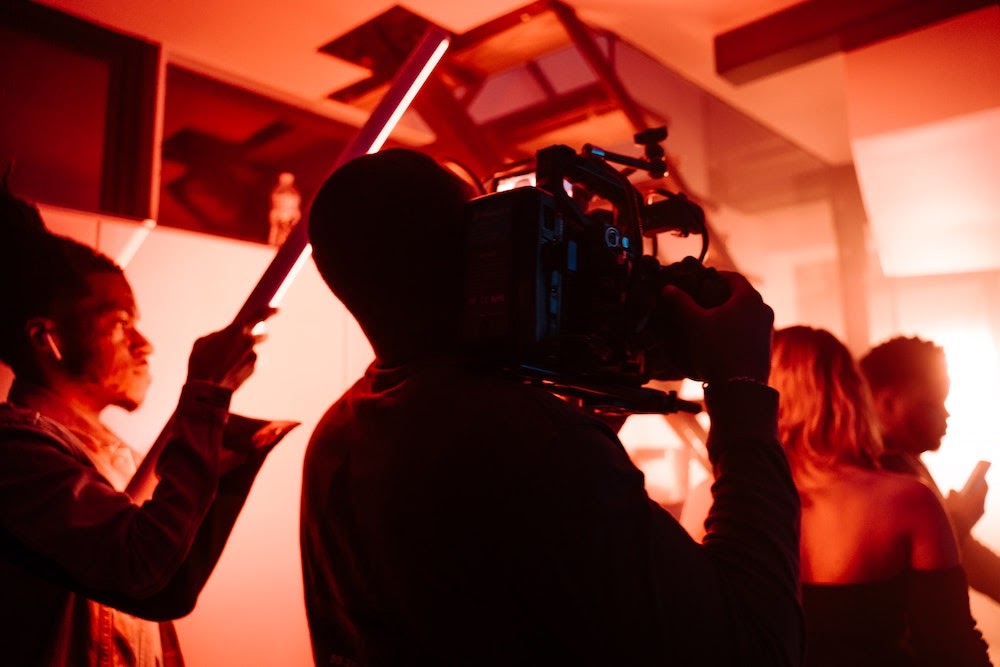DaVinci Resolve started as a color grading platform for professional colorists, but has continued to evolve into one of the most powerful all-in-one video editing platforms on the market. This means that you can take a project from raw footage to publishing-ready, all within your DaVinci Resolve studio.
In this tutorial, we’re going to cover how to do one of the most essential transitions in an editor’s toolkit, the fade to black, right inside of DaVinci Resolve (and without any complicated effects or transitions to apply).
How to fade clips to black in DaVinci Resolve
Fading to black is one of the most common trimming techniques in filmmaking, and DaVinci Resolve has made it easy to add it to your clips. Here’s how:
Step 1: Open your DaVinci Resolve project or create a new one.
Step 2: Drag the first clip(s) you want to fade to black to the timeline.
Step 3: Click on the "Edit" workspace icon at the bottom of the workspace to enter the Edit workspace.
Step 4 (Optional): If your clip is really small on the timeline, zoom in a little bit by pressing the (+) button above the timeline.
Step 5: Hover your mouse over the video clip until you see a white or red handle appear on the clip.
The red handle will be at the beginning of the clip, and the white will be at the end. These control the “fade in” and “fade out” respectively.
Step 6: To create a fade out to black, grab the white handle and drag it to the left according to how long you want your fade to last.
To do a fade in, reverse this. Grab the red handle and pull it to the right to create a fade in from black.
And that’s it!

FAQs about using fade to black in DaVinci Resolve
Here are some answers to common questions you may have about fading a clip to black in DaVinci Resolve:
Is there a keyboard shortcut to create a fade to black?
Frustratingly for many editors, no. Unlike Premiere Pro, DaVinci Resolve does not have a keyboard shortcut you can use to quickly add fades to black to one or more clips.
Create together remotely, in real time

Can I fade to a different color besides black?
Using the above technique will only allow you to fade to black. However, if you want to fade to a different color (such as white), you can follow these steps:
Step 1: From your “Edit” workspace, select the “Effects Library” tab.
Step 2: Locate “Toolbox” and navigate to “Video Transitions.”
Step 3: Under “Video Transitions,” open the “Dissolve” section and click on “Dip to Color Dissolve.”
Step 4: Drag and drop the “Dip to Color Dissolve” transition to your selected clip end.
Step 5: Select the transition on the clip and click on “Inspector.”
Step 6: Under the “Inspector,” select “Transition” tab.
Step 7: Go to “Color” and use the eyedropper to select your desired transition color.
Step 8: Set the “Start Ratio” value to 0 and the “End Ratio” value to 50.
Now you can fade in or out from whatever color you prefer.
Can I batch-add fades to black?
The only way to batch-add a fade to black would be to use the “Dip to Color Dissolve” transition outlined above.
In this case, you would set the color to black, apply it to one clip, then copy and paste it to the subsequent clips. This is the closest technique to a batch-add that DaVinci Resolve allows for this transition.
When is it appropriate to use fade to black?
While the most common way to use fade to black is to end a project, there are quite a few other ways it can be used, including:
- For crossfades between scenes
- To transition between still images in a slideshow
- To mimic someone “blacking out” on screen
- To introduce a title card or credits
Final thoughts
When it comes to learning different techniques in DaVinci Resolve, it’s important to remember that no one starts out a master. Take your time, do your research on DaVinci Resolve, and constantly look for ways to apply your new skills to hands-on projects so you can learn what works and what doesn’t for your style of editing.
For more help with editing and working in DaVinci Resolve, check out these articles:
If you're looking for a better way to bring your remote video production team closer together and collaborate more efficiently from a distance, check out Evercast.
Evercast allows you to stream your DaVinci Resolve edit sessions in HD while video chatting and exchanging notes with your team. That is collaborative editing made easy.














